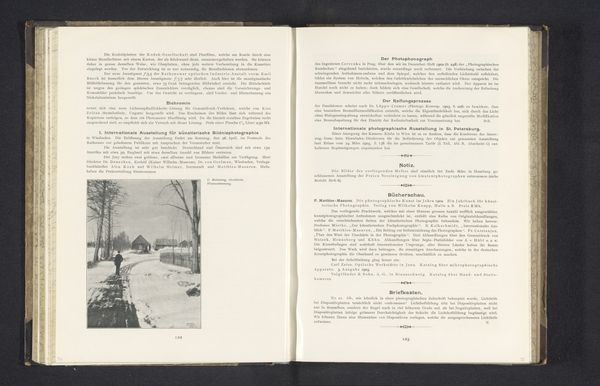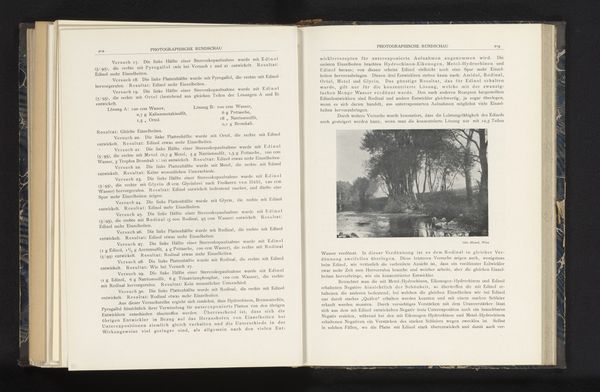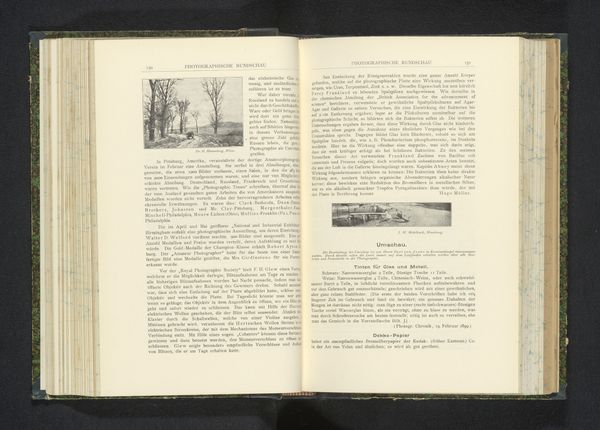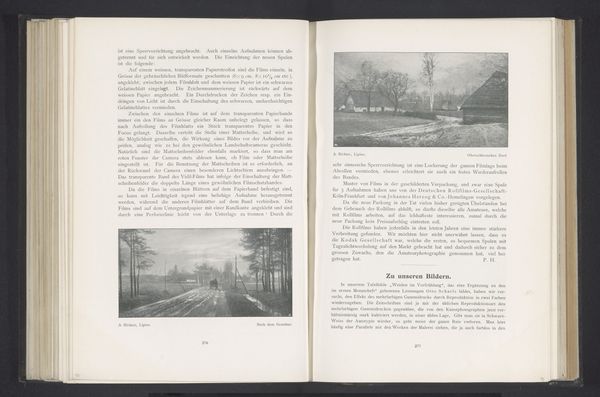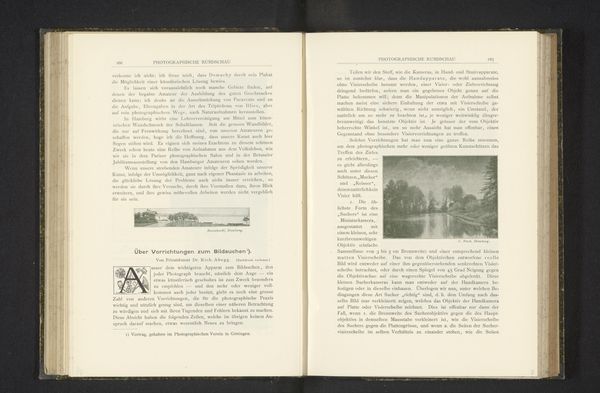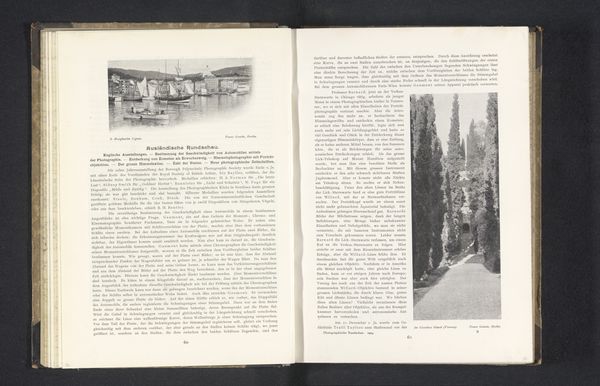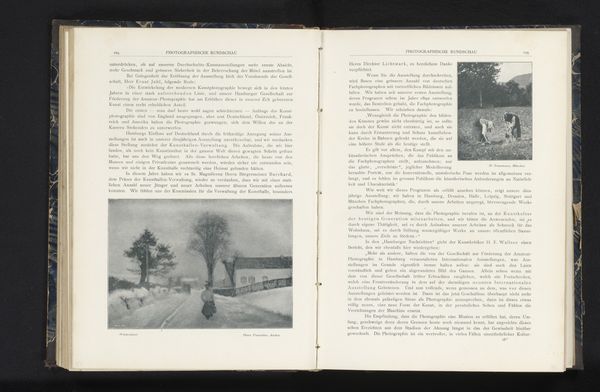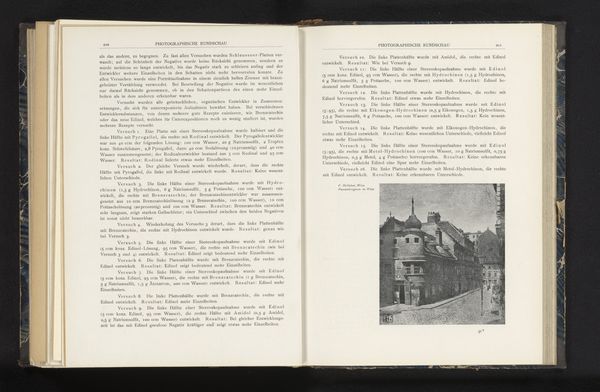
print, photography, collotype, gelatin-silver-print
#
portrait
# print
#
landscape
#
photography
#
collotype
#
gelatin-silver-print
#
monochrome
Dimensions: height 101 mm, width 79 mm
Copyright: Rijks Museum: Open Domain
Curator: What a find! This image is a collotype, likely printed before 1901. It’s titled "Stadsgezicht," and attributed to G. Hauberrisser. Looking at it, what springs to mind for you? Editor: Immediately, it evokes a feeling of stark isolation. The monochrome palette emphasizes the bareness of the scene—a tree stripped of its leaves standing alone against a snow-covered landscape. It's incredibly minimalist, almost ghostly. Curator: It does capture a quietness. Collotype printing offered a wide tonal range, allowing for such nuanced depictions of light and shadow. Seeing this technique used on what's essentially a street view invites a contemplation on how photography, even in its early days, was framing everyday experiences and inviting meaning. Do you feel this captures its subject, though? Editor: Absolutely, photography from the outset has been bound to meaning. But the image for me is about absences—an absence of colour, of people, of movement. The street curves, seemingly leading nowhere. It conjures feelings around loss and alienation. The formal features underline social themes. This kind of photographic perspective often has origins in modern capitalism. The figure feels severed. It isn’t so surprising that collotype was embraced for photojournalism and similar reporting tasks. Curator: I agree it isn’t just representational; it’s about evocation too, making it less cut and dried. Given how easy we imagine photography being these days, in the "early days", the technical requirements were formidable. Does that affect how you interpret its "meaning," the sort you described, or is that secondary? Editor: In this picture I feel technology is critical, though I suppose the level to which is another question. It’s like that quote from Walter Benjamin, isn't it? The technology allows for these pictures of industrial subjects, making the human subject disappear into that modernity that feels still striking today. Curator: Perhaps. Viewing "Stadsgezicht", I see less gloom now. I notice more a strange beauty that resides precisely within that stillness. A landscape touched by modernity. Editor: Ultimately, for both of us, there is an awareness of both melancholy and technological prowess at work in Hauberrisser’s image. Perhaps the dialectic between these polar opposites is how best to situate our understanding and response to such an affecting vista?
Comments
No comments
Be the first to comment and join the conversation on the ultimate creative platform.
